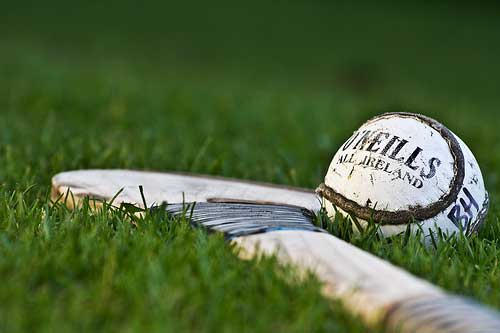The World famous All Ireland Hurling Final is about to take place in Croke Park, Dublin City on Sunday the 3rd of September 2017.
Where Waterford and Galway will face off for the coveted Liam McCarthy Cup that every county in Ireland longs to carry home.
Being from The Déise (Waterford) we have been swept with All Ireland fever. Galway and Waterford have been engulfed with a sea of their counties colours.
Excitement is at an all time high and here in Waterford, our glorious blue and white has taken a hold of every house and business in the county, with villages and towns embracing our home team and colours with passion and excitement.
Homes, cars, public building and public places throughout both County Waterford and Galway are glowing in their beloved colours. We are trying not to be biased but we can’t help but scream UP THE DEISE!!!! Deise is a name given to Waterford because of a tribe who lived there between the 4th and 8th century.

To become part of an All Ireland hurling final team takes years of training commitment and sacrifice.
Hurling is one the world’s fastest, toughest, roughest, sports played on grass. It is Ireland’s favourite sport.
Hurling is played all over the world amongst Irish communities and has become very popular in the United States.
It is said that hurling was first introduced to Ireland in about 1200 BC when our Celtic Ancestors came to Ireland and it is mentioned in Ancient Laws of Ireland, The Brehon Law. Hurling has been played for over 3000 years.
Ancient Irish Legends describe Irish Hero Cú Chulainn playing hurling, as well as Fionn Mac Cumhail and the Fianna. In legend it is where Cú Chulainn got his name, His name was originally Setanta and that changed when he got his new name on a visit to the court of Chulainn.
On arriving at the court Setanta was attacked by Chulainn’s hound and in self-defense, hit his Sliotar with his Hurley at the vicious dog and the Sliotar lodged in the dog’s throat and he died. Setanta said to Chulainn that he would guard his home as he had killed his dog, he was to be know as Cú Chulainn from that day forth. Cú Chulainn means the Hound of Chulainn.
More about the Game of Hurling
Hurling is a fast and often dangerous game, injuries at times can be very serious. There is no padding or any protective gear, however in 2010 helmets with face guards became compulsory, this has helped to cut down on head and face injuries.
Hurling is playing with a wooden stick, which is known as a Hurl or Hurley. The Hurl is used to hit a small ball called a Sliotar into the goal or over the bar.
The Hurley is a flat curved stick and is traditionally made from Ash, which is mainly imported from Denmark and Sweden, over time native Irish Ash has become rare so they have to import from Northern Europe.
A Sliotar is a small leather ball with cork in the middle, and it is very hard.
How does the Score in Hurling Work?
The goal posts are H shaped and there is one at either end of the pitch. If the Sliotar goes into the net below the bar it is a goal and if it goes over the cross bar between the posts it’s a point. A goal is worth 3 points. There is a referee, two lines men and four umpires two at each goal post. If it’s a goal a green flags are raised, if it a point white flags are raised.
During play the Sliotar cannot be held in the hand for anymore than 4 steps. It can be kicked or slapped with an open hand to be passed on to another player or into the goal posts.
Substitutes are permitted during the game, which lasts 70 minutes with a break at half time. You can bounce or balance the Sliotar on the Hurley while playing. The Sliotar has to be picked off the ground with the Hurley. There are 15 players on each team. Every Irish County has its own colours, and they wear their colours with pride, To play for your County is a great honor. Teams train all year round.
To become part of your County teams takes long hours and massive amounts of dedication.
Many players have been playing since they were very small children and it is commonly played in most schools throughout Ireland. In Ireland Hurling is regulated by the Gaelic Athletics Association.
In 1884 the Gaelic Athletics Association was founded in the town of Thurles, Co Tipperary.
It is more commonly known as the GAA.
How big is a hurling pitch?

A hurling pitch should be rectangular and be around 130 to 145 meters in length and between 80 to 90 meters in width. Youth tournaments may have smaller pitches available to them. The pitch markings are at 13 meters, 20 meters, 45 meters and 60 meters.
[eletter_signup]

